

Ben Zachariah
Video: Off-road battle for Beer O’Clock Hill has automakers scrambling
5 Hours Ago
The Suzuki Vitara Turbo has been very long in the tooth for years now, though its Boosterjet turbo engine is still full of charm.
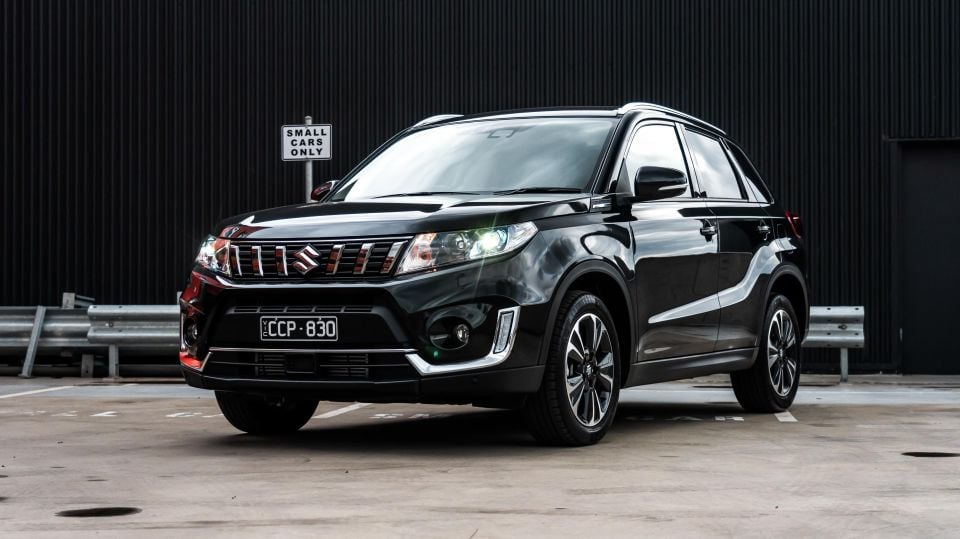
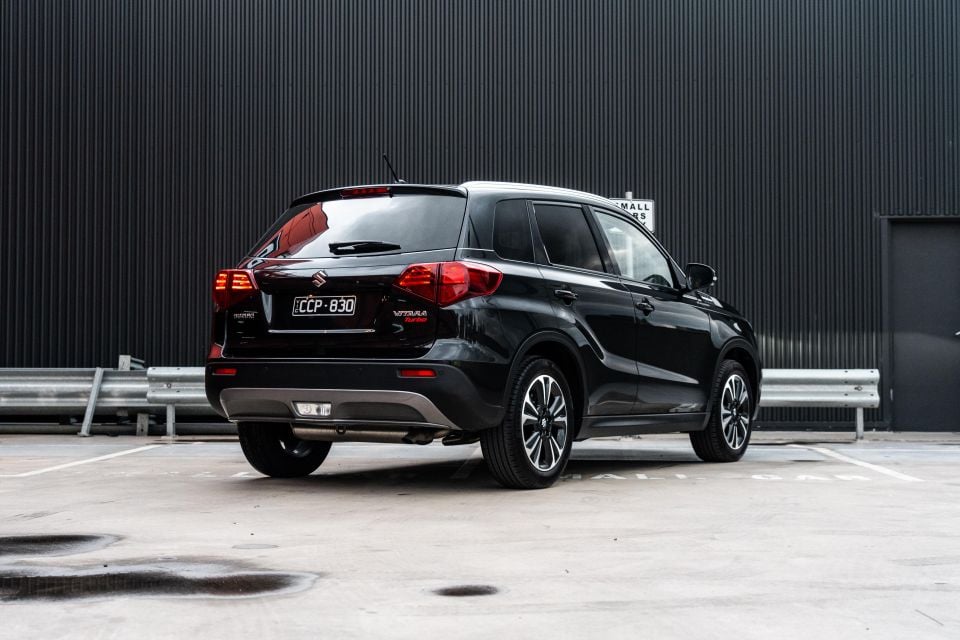

Quickly see how this car stacks up against its competition. Select any benchmark to see more details.
Where expert car reviews meet expert car buying – CarExpert gives you trusted advice, personalised service and real savings on your next new car.
The fourth-generation Suzuki Vitara has been with us now for almost 10 years, and it doesn’t appear to be going anywhere anytime soon.

This small SUV is now among the likes of the Mitsubishi ASX as the oldest vehicles in its segment, though the Hungarian-sourced Suzuki still has plenty to offer.
The Suzuki Vitara Turbo, as tested here, is fitted with the brand’s Boosterjet engine which is offered in the likes of the Swift Sport and larger S-Cross. With 103kW and 220Nm it has plenty of grunt to get this 1.2-tonne SUV moving.
Inside there haven’t been many changes throughout the current Vitara’s time on sale, though most recently Suzuki reverted to using the factory-fitted Bosch-supplied 7.0-inch touchscreen infotainment system. It was previously fitting a larger 9.0-inch unit locally due to semiconductor shortages.
Overseas there has been yet another facelifted version of the Vitara revealed, and Suzuki Australia has previously confirmed it will arrived here in the early stages of 2025. It will also locally debut a hybrid powertrain that has been available in other markets for years now.
Is the Vitara Turbo still worth considering in 2024? Read along to find out.
On test here is the most affordable non-limited-edition Vitara variant with the more powerful Boosterjet turbocharged engine.
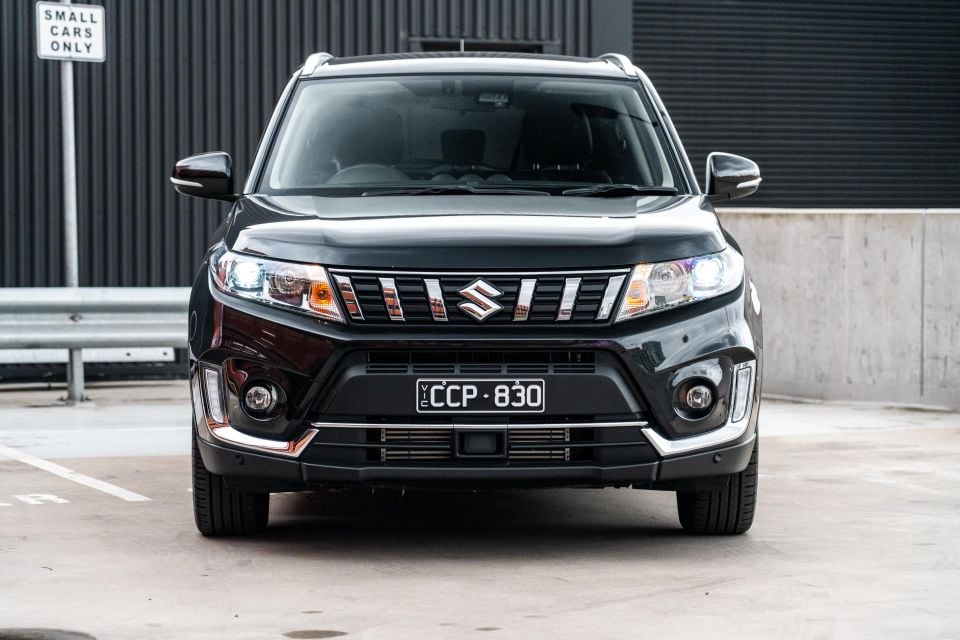
| Model | Drive-away pricing |
|---|---|
| 2024 Suzuki Vitara 5MT | $30,990 |
| 2024 Suzuki Vitara Beat 6AT | $30,990 |
| 2024 Suzuki Vitara 6AT | $31,990 |
| 2024 Suzuki Vitara Turbo Beat 6AT | $35,990 |
| 2024 Suzuki Vitara Shadow 6AT | $36,490 |
| 2024 Suzuki Vitara Turbo 6AT | $36,490 |
| 2024 Suzuki Vitara Turbo Shadow 6AT | $41,490 |
| 2024 Suzuki Vitara Turbo Shadow AllGrip 6AT | $41,490 |
To see how the Suzuki Vitara lines up against the competition, check out our comparison tool.
Buy your new car without the stress. It's fast, simple and completely free.

Great service from Travis and team, second time I have used this business would not hesitate to recommend them to anyone
Craig C.
Purchased a Ford Ranger in Sunshine Coast, QLD
CarExpert helped Craig save thousands on his Ford Ranger, now let us save you on your next new car.
Find a dealIf you’re expecting drastic changes inside the Vitara’s cabin for 2024, think again…
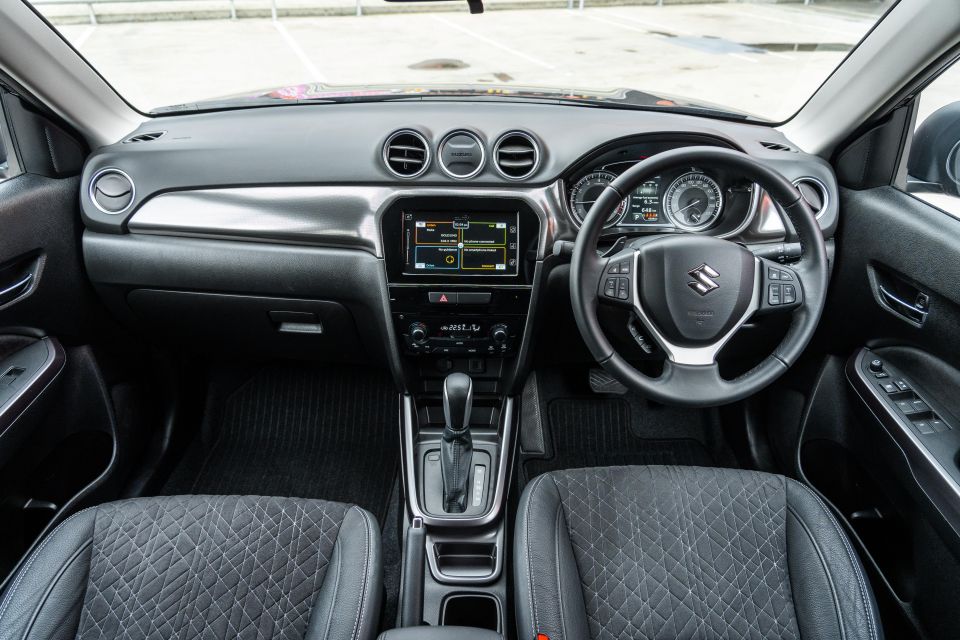
This almost 10-year-old small crossover hasn’t had any major changes to the interior since it debuted locally in 2015. Only minor tweaks that came about with the facelift in 2019 included a new colour instrument cluster display and the deletion of the cool-looking central analogue clock.
With the current asking price of the Turbo variant on test here, more technology and higher quality materials are expected. Chinese competitors offer newer and higher-tech interiors for less.
Sure Suzuki offers the S-Cross, which has a newer interior and some plusher touches, but it’s even more expensive than the Vitara. Despite this there’s still nothing objectively wrong with the Vitara’s interior, it just is what is – budget-oriented. It also looks and feels old-school now among fresher rivals.
Hopping into the Vitara is easy as it has a raised ride height synonymous with crossover SUVs. This is particularly handy for those with limited mobility and don’t want to step down or up too far into a vehicle.
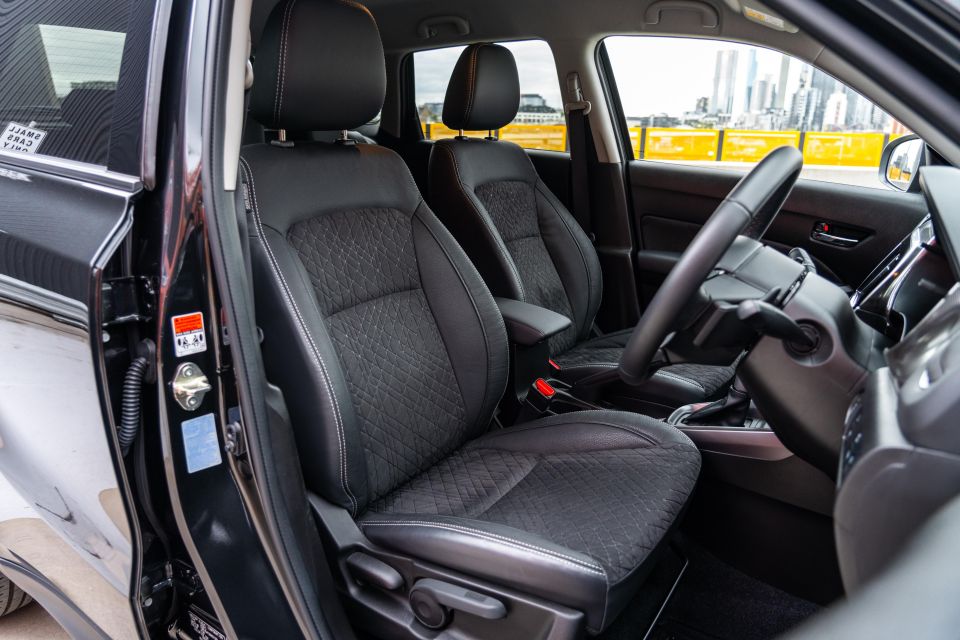
You get a first whiff of the Vitara’s budget-oriented finishes as the doors are super light to open and shut. It doesn’t feel like there’s much padding in the doors, which is something I’ll expand upon further in the driving section.
Once you’re in the Vitara has a pretty bare-bones interior for a brand new car in 2024. Almost every surface is hard plastic, which doesn’t sit quite right with me in a small car that costs over $36k drive-away.
In all fairness there are squidgy soft-touch textile sections on the door armrests and centre armrest, as well as a small felt-feeling panel on the front doors.
The driver’s seat in the Vitara Turbo is mounted high which gives you a perched feel. It pairs nicely with the large windows and thin pillars that provide excellent all-round visibility. The seat itself is comfortable for shorter trips, providing enough side bolstering and thigh support to keep me locked in.

On longer journeys however my upper back felt unsupported, making me tense my shoulders. Due to the minimal reach adjustment for the steering wheel as well, I felt I needed to lean forward to properly grasp the wheel.
Speaking of the steering wheel, it’s a typical Suzuki unit that hasn’t changed for the life of the current-generation Vitara. Its leather wrapping, like the seat bolsters, doesn’t actually feel like real leather, which is common for the segment.
All the buttons on the steering wheel are logically laid out, though it still feels like the voice assistant and call buttons mounted on the left-hand side of the steering column are an afterthought.
Ahead of the driver the instrument cluster feels properly old in the age of fully digital instrument clusters. In saying that though the analogue dials for your speed and revs are clear to read and understand at a glance.
The 4.2-inch colour instrument cluster display has a number of informative pages that can be cycled through. These are nice to have but I do wish there was one that showed a digital speedometer to complement that proper physical dial.
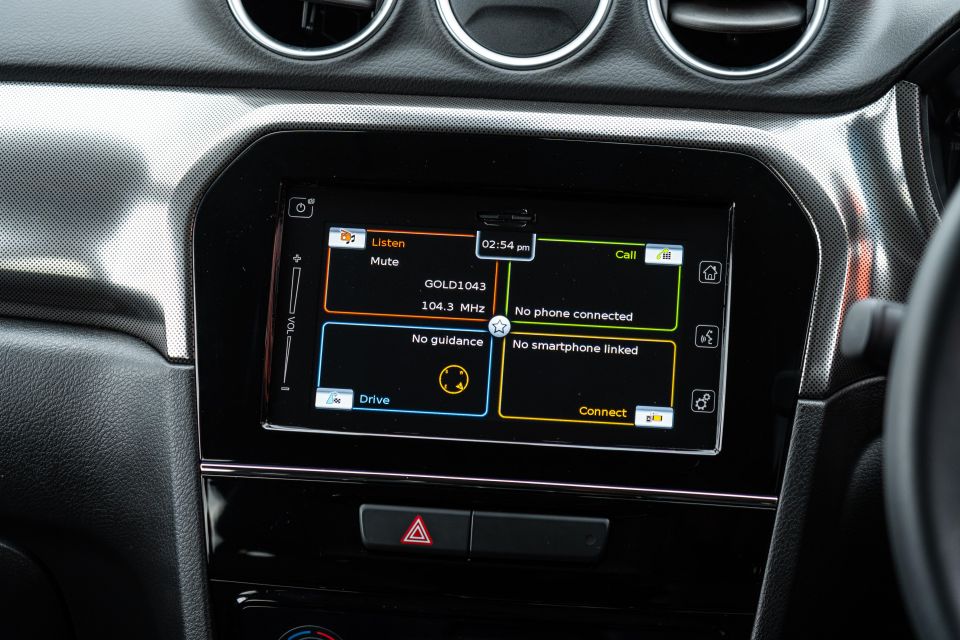
Also when you turn on cruise control the graphic for this takes up a considerable amount of precious screen real estate.
Moving across Suzuki has reverted to fitting the Vitara range with a Bosch-sourced and factory-fitted 7.0-inch touchscreen infotainment system.
I have plenty of experience with this particular infotainment system as it was fitted to my Jimny when I bought it. After a number of issues, including intermittent Apple CarPlay connectivity, I recently decided to ditch it and install an aftermarket Pioneer unit instead and have been loving it ever since.
Despite my previous experience with my Jimny’s standard infotainment system, our Vitara Turbo tester didn’t display any infotainment glitches or smartphone mirroring dropouts whatsoever during our (notably short) time with it.
It does take a while for the system to boot up when starting the car, though once it’s on you can jump around from page to page easily. Be mindful however there isn’t a whole heap to the interface – it’s a rather low-tech implementation.
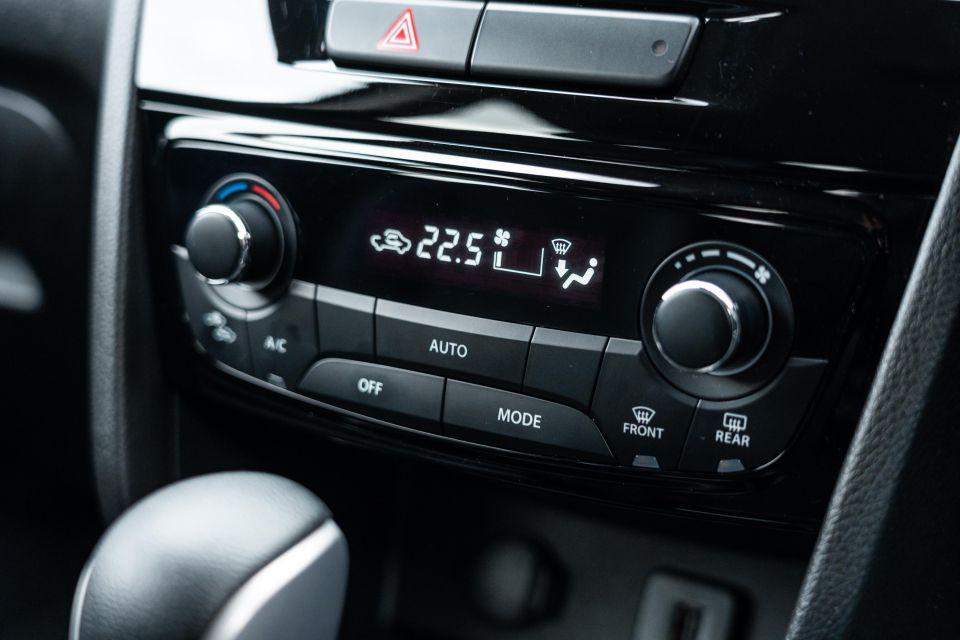
The Vitara only comes with wired forms of Apple CarPlay and Android Auto. Like the booting up of the system, it takes a while for the infotainment system to enter the respective smartphone mirroring application. This can be frustrating if you need to quickly punch in navigation details, for example, in a rush.
There’s also built-in satellite navigation which is nice to have just in case you need to navigate home and don’t have any phone service. It’s not the most intuitive system to use, however.
Looking around the cabin there’s no properly nice place to stow my plus-sized phone when plugged in. I ended up smooshing it ahead of the gear lever which felt like the best spot but almost get in the way of shifting into ‘Park’.
There are also two cupholders behind the gear selector. These can hold coffee cups fine, though larger bottles struggle to fit due to their square shape. There are also no teeth to securely hold drinks.
Other storage options include a small centre console box for odds and ends, a decently sized glove box, as well as door pockets with large spaces for bottles.
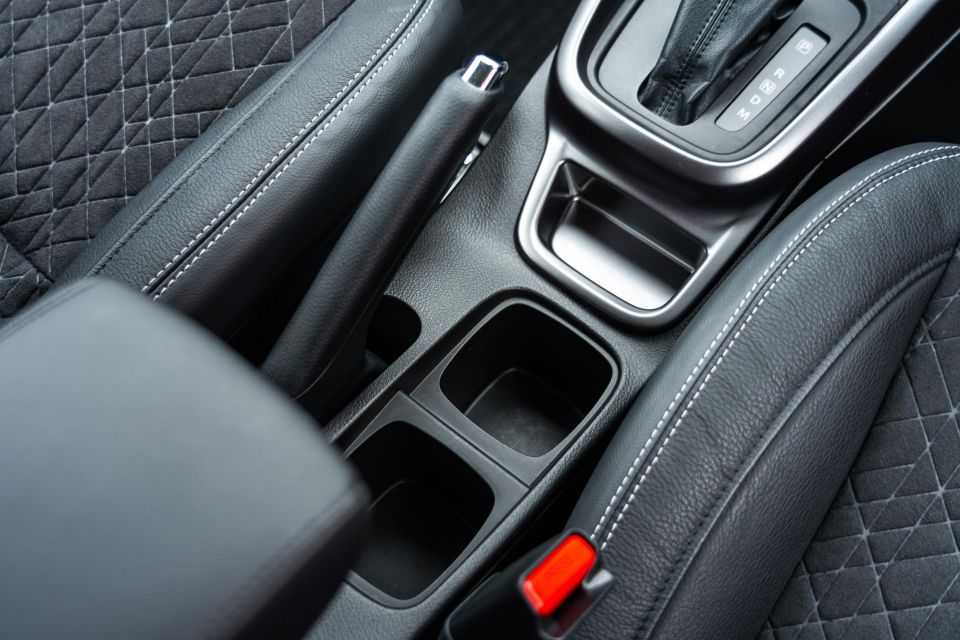
Moving to the second row it feels like an even further step down in terms of perceived quality. There are no soft-touch materials at all which makes it grim space to spend time.
At a leggy 182cm I found leg- and shoulder room to be a little on the tight side, but this isn’t uncommon in this size of vehicle. Head- and toe room are okay though.
In order to get comfortable behind my own driving position I had to splay my legs on either side of the seat in front. This is fine for shorter trips, though on longer trips this would get very annoying.
While it’s not a very wide car, two shorter adults should be able sit in the back of the Vitara relatively happily, though pushing it to three abreast would cause for some unhappy passengers.
The centre seatbelt in the rear is also roof-mounted, meaning when it’s in use it can obstruct rearward visibility.
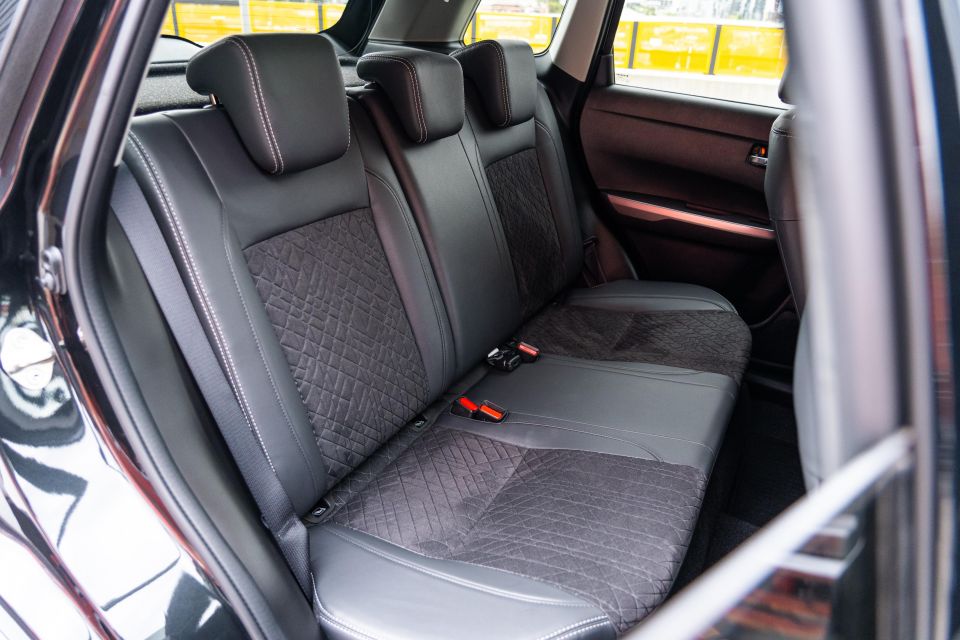
In terms of child seat capability there are the requisite ISOFIX anchor points on the outboard seats and top tethers on all three rear seats. It’d be very tight fitting more than one child seat in this car though.
Besides the large side windows which help make the small cabin feel airier, there aren’t very many amenities in the second row. There are no rear air vents, USB charging ports, nor centre armrest with cupholders.
You only get bottle holders in the doors and a singular map pocket on the rear of the front passenger seat.
Out back the tailgate feels very light and thin. It’s super easy to close with one hand which is a benefit if you don’t want to put your hand on the paint.
While the second row is a little on the cramped side, the Vitara packs a boot space that’s larger than a number of its newer and more stylish rivals.
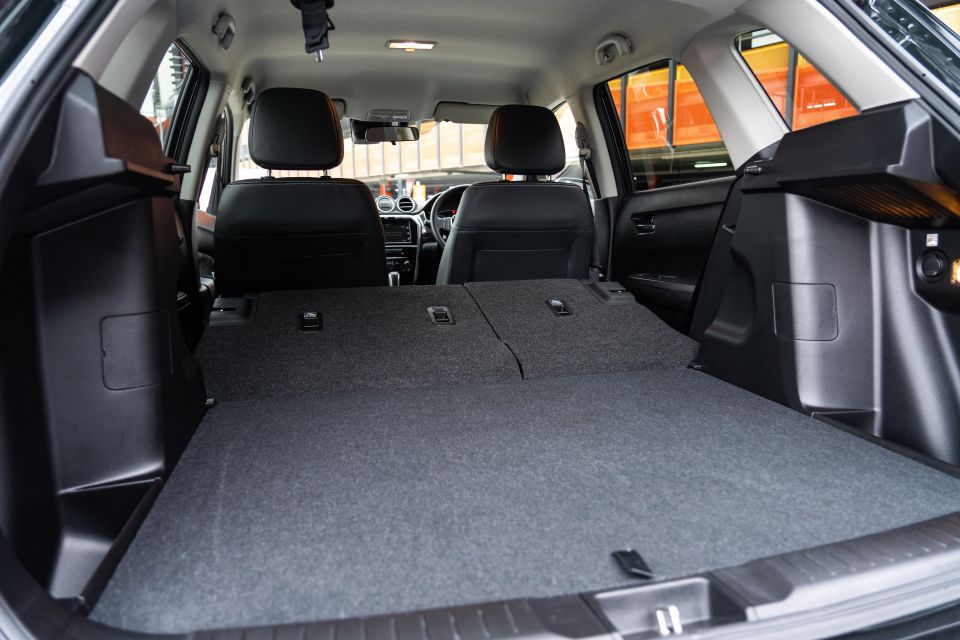
There’s even a small concealed space under the floor where you can stow items out of sight.
At 375 litres with the rear seats upright, it’s not what you’d call huge, but for the segment it’s a square and usable space.
Folding down the 60/40 split-folding rear seats expands the boot space to 1120 litres. While the rear seats don’t fold completely flat there’s no awkward step up like some of the Vitara’s rivals.
Lastly, under the boot floor is a space-saver spare wheel. While this isn’t quite as useful as a full-size spare wheel, it’s great to have if you get a puncture and you’re in the middle of nowhere.
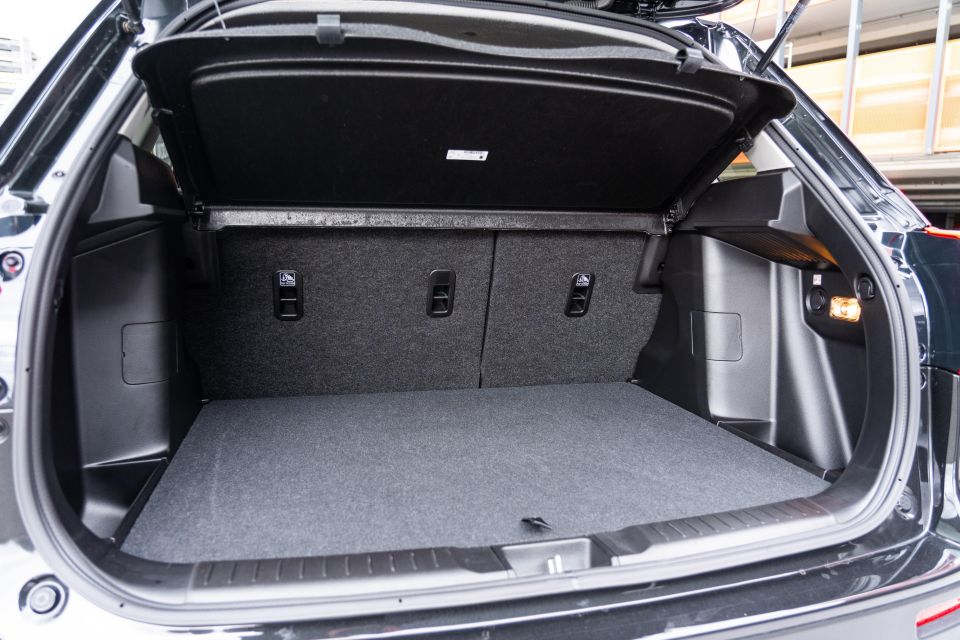
| Dimensions | Suzuki Vitara Turbo |
|---|---|
| Length | 4175mm |
| Width | 1775mm |
| Height | 1610mm |
| Wheelbase | 2500mm |
| Cargo capacity | 375L (5 seats) 1120L (2 seats) |
To see how the Suzuki Vitara lines up against the competition, check out our comparison tool.
The Vitara Turbo is equipped with the more powerful 1.4-litre turbocharged four-cylinder ‘Boosterjet’ engine. Our tester is front-wheel drive, though there is an all-wheel drive model available.
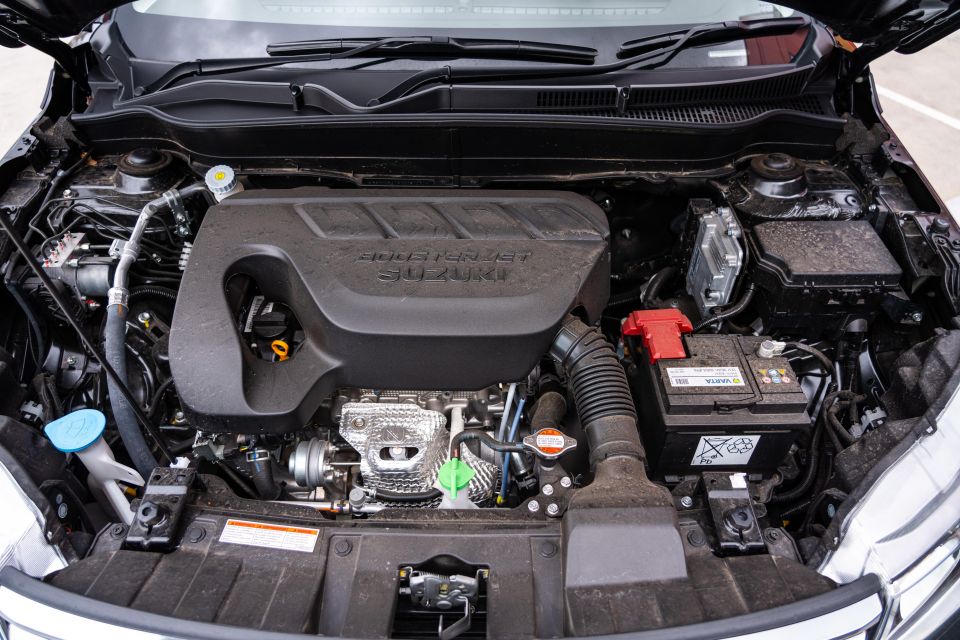
| Specifications | Suzuki Vitara Turbo |
|---|---|
| Engine | 1.4L 4cyl turbo-petrol |
| Power | 103kW (5500rpm) |
| Torque | 220Nm (1500-4000rpm) |
| Transmission | 6-speed auto |
| Driven wheels | FWD |
| Weight | 1185kg (kerb) |
| Fuel economy (claimed) | 5.9L/100km |
| Fuel economy (as tested) | 6.1L/100km (125km urban driving) |
| Fuel tank capacity | 47 litres |
| Fuel requirement | 95 RON |
| CO2 emissions | 138g/km |
| Emissions standard | Euro 5 |
| Braked tow capacity | 1650kg |
It’s worth noting on a 80km drive loop including heavy urban, freeway and outer-urban windy roads, I achieved an average of 5.5L/100km, which is pretty great for this kind of car.
To see how the Suzuki Vitara lines up against the competition, check out our comparison tool.
Starting up the Boosterjet engine comes to life quietly, even when it’s cold. It has a crisp idle sound that isn’t as intrusive as some Mazda or Subaru cars, for example.
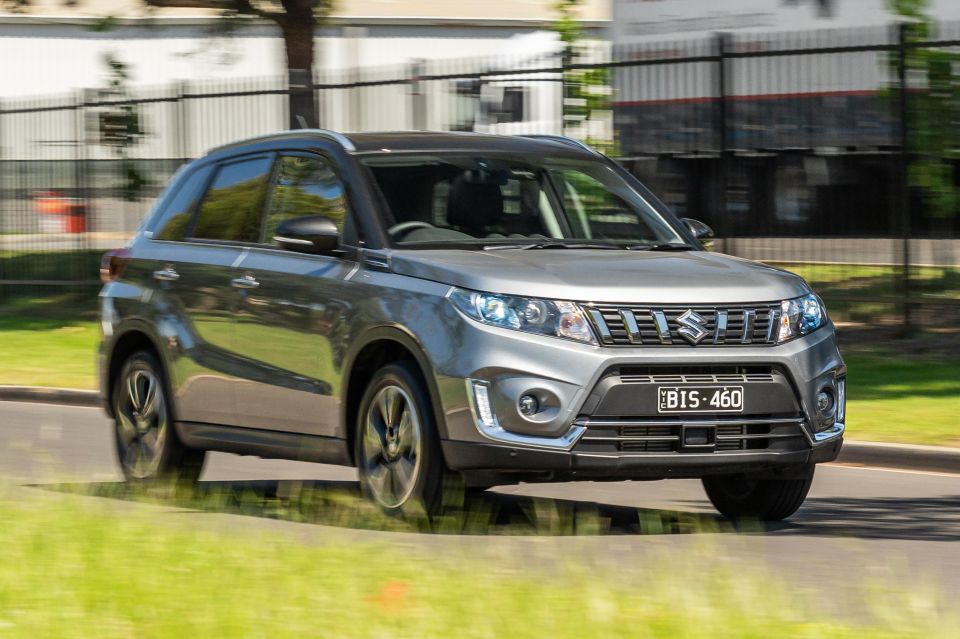
Where expert car reviews meet expert car buying – CarExpert gives you trusted advice, personalised service and real savings on your next new car.
Setting off this little crossover feels zippy and peppy. It surges away from a standstill with ease and is eager to get up to the sign-posted speed limit in a decent time.
The Vitara Turbo is by no means a hot SUV, but the Boosterjet engine makes this small SUV feel a little warmer than you initially think. It’s a cracker of an engine and I can see why it’s also fitted to the S-Cross, as well as as the Swift Sport.
As standard there’s a six-speed torque-converter automatic transmission that’s arguably pretty low-tech in 2024. It does the job though and doesn’t have a learning curve like the dual-clutch transmissions that are fitted to the Vitara’s newer rivals.
The six-speed auto does like to shift up gears rather quickly to keep revs down and minimise fuel use. Thankfully the 220Nm of peak torque comes on tap from just 1500rpm, meaning it can lean into this reserve often, creating a fuss-free driving experience.
Where this comes undone at points however is the transmission can hang on to higher gears for a little too long, causing the car to feel like it’s bogging down. After a second or two the transmission does eventually sorts itself out and changes down a gear or two to help you accelerate faster.
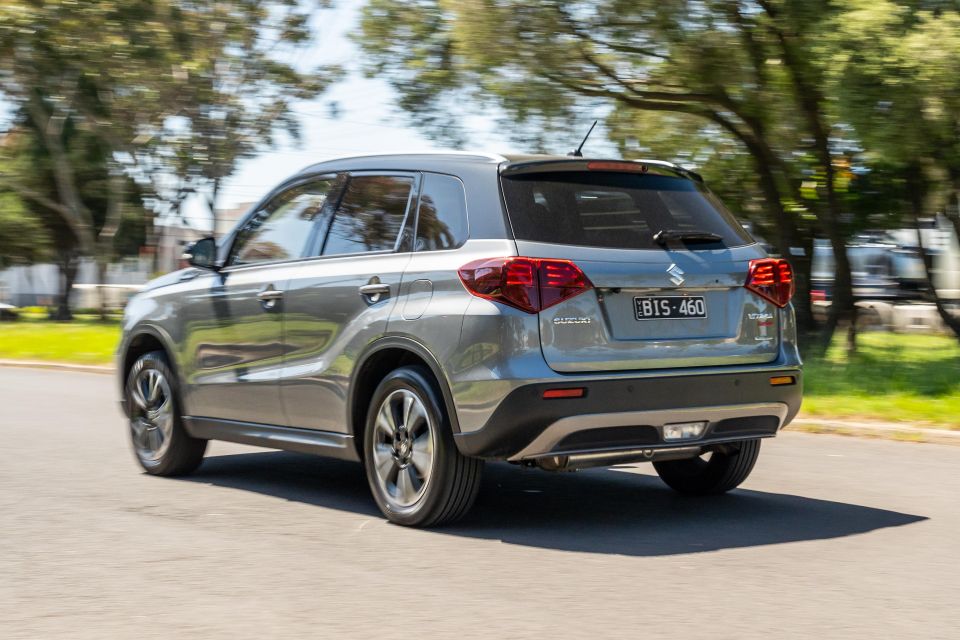
Unfortunately there are no sporty drive modes in the Vitara to help make the revs flare a little quicker. There is a manual mode, but then you need to use the paddle shifters to change gears yourself.
Around town and in the city the Vitara Turbo feels like it’s in its element. It’s very light on its feet, making it a super fun car to chuck around in everyday scenarios. It only weights 1.2 tonnes so it’s a lightweight for the segment.
The Vitara Turbo’s dynamism is let down however by it’s steering as it doesn’t feel like properly connected to what’s actually happening with the wheels. It feels awkwardly heavy on centre and then overly assisted when the wheel is turned a bit further.
For such a light car I also wasn’t expecting the suspension to be so firm and brittle over bumps and pimply metropolitan roads. Many road imperfections transmit into the cabin which can get tiring pretty quickly.
As I mentioned in the interior section, the Vitara has acres of glass which provides plenty of outward visibility. You’re also easily able to place each corner of the vehicle which makes parking a breeze.
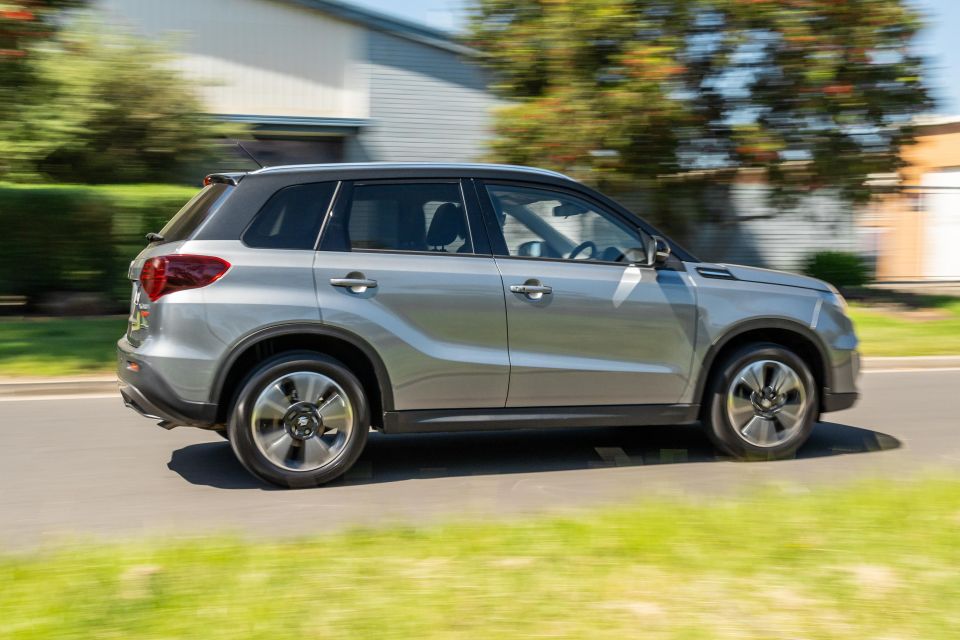
As standard the Vitara Turbo comes with front and rear parking sensors, as well as a reversing camera. The latter doesn’t have the greatest resolution and also makes an annoying singular beeping sound every time it’s activated.
Building up speed the Boosterjet engine doesn’t feel stressed whatsoever. The car will happily sit along at highway and freeway speeds with revs kept down low. It will also only drop a gear if it really needs to.
What becomes more of a major factor at higher speeds in the Vitara however is the copious amounts of road and tyre noise. Inside the cabin it sounds very tinny, which is likely a result of the light doors and minimal padding.
In order to negate the roaring road and tyre noise you can turn the sound system volume up, but ultimately this doesn’t fix the problem.
At higher speeds the suspension also doesn’t really settle, feeling busy almost all the time. Mid-corner bumps really upset the car too. This is unfortunate because it makes longer drives fatiguing.
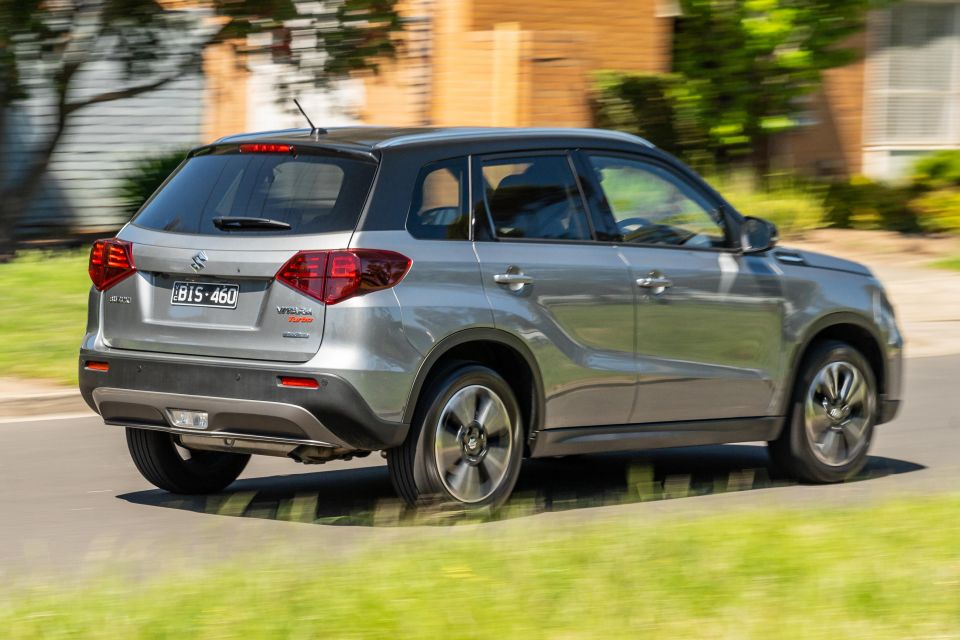
The Vitara Turbo would be a much more comfortable car to rack up kilometres on the highway in if it had more sound deadening and a slightly more compliant suspension tune, as the turbocharged powertrain can definitely handle the task.
On the safety front, the adaptive cruise control system is good but not great. It’s a handy feature that helps reduce how fatiguing highway driving can be, but it also likes to leave a generous gap between the car ahead.
There’s also a lane departure warning that only playing a chime when you are starting to drift out of your lane. It doesn’t actually provide any assistance to steer you back in the lane like many newer rivals.
Also of note, I had one moment where the autonomous emergency braking (AEB) system went off falsely. It was on a narrow urban road with cars parked on both sides. This type of thing happens occasionally and I’m glad there were no other moving cars around me.
Lastly, I need to mention the headlights. The Vitara Turbo has LED low beams which are fantastic and bright, however the high beams are halogen. Yes, you read that correctly.
On test here is the penultimate variant in the current range, the Vitara Turbo.
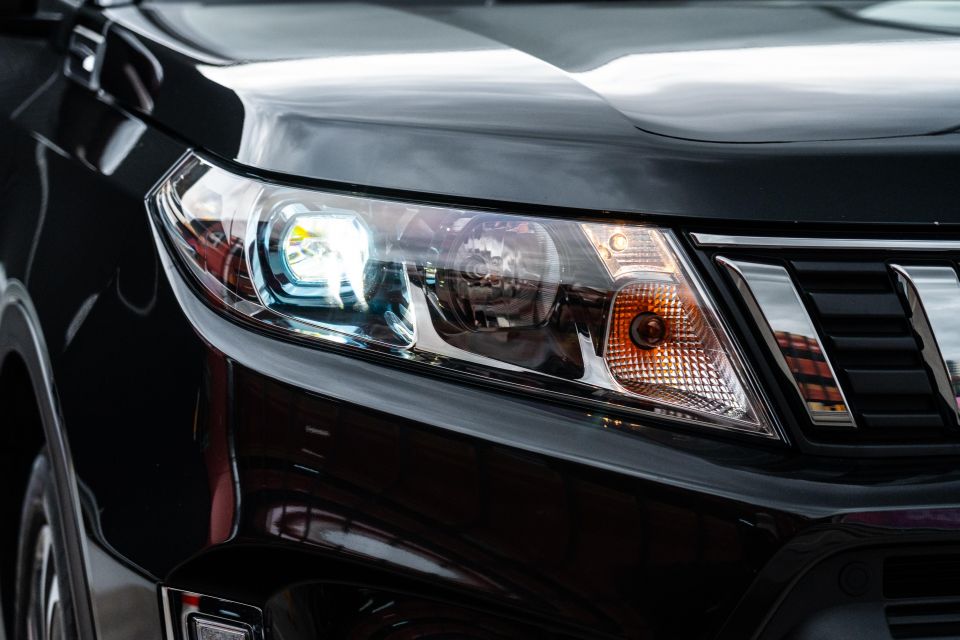

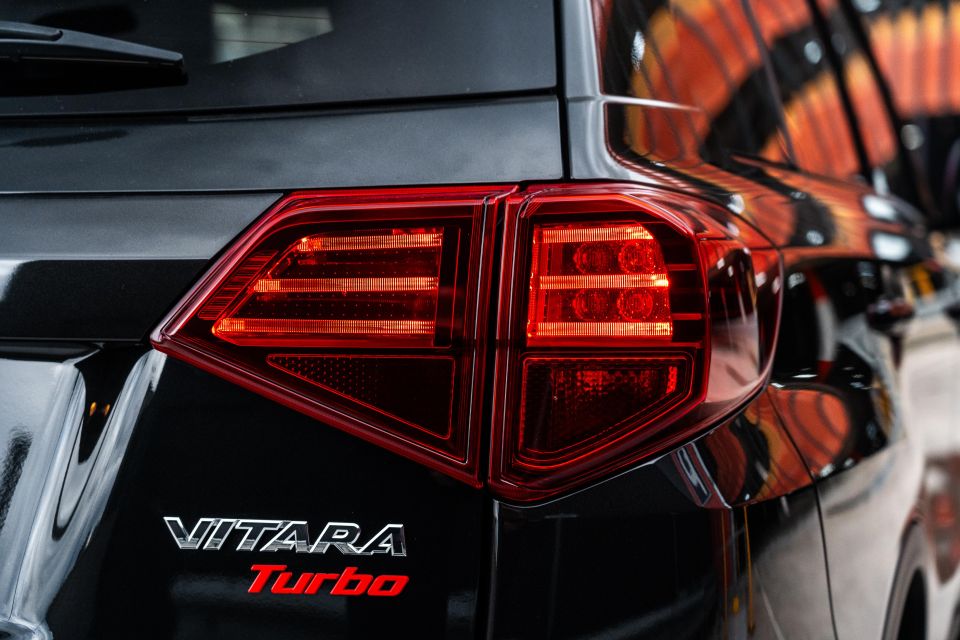

Vitara highlights:
Vitara Beat adds:
Vitara Shadow adds over the base model:
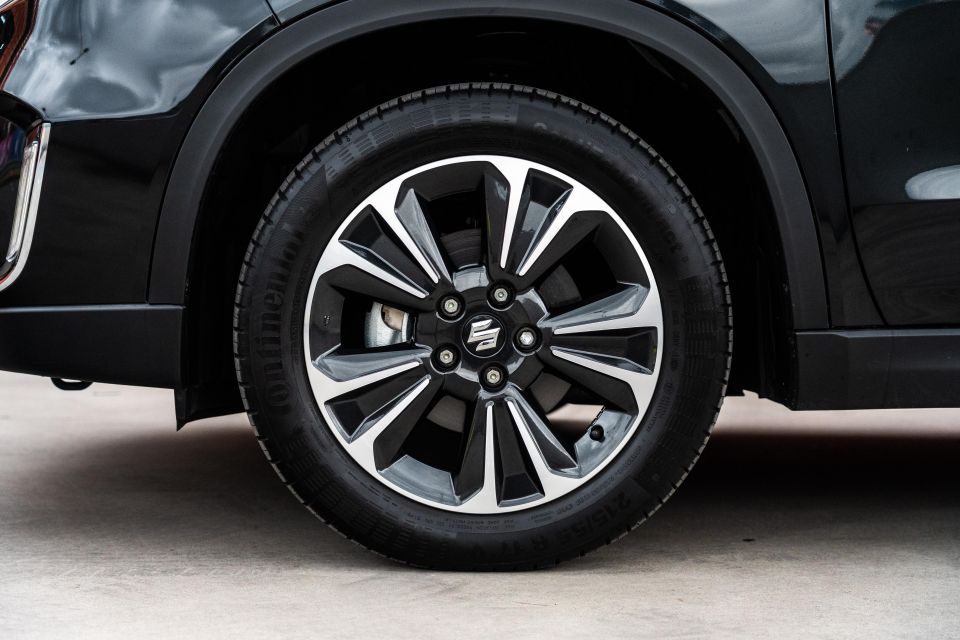

Vitara Turbo adds over the base model:
As of January 1 2023, the Suzuki Vitara range is unrated in Australia. Vehicles built before January 1 wear a five-star ANCAP safety rating, based on 2015 tests against older criteria.
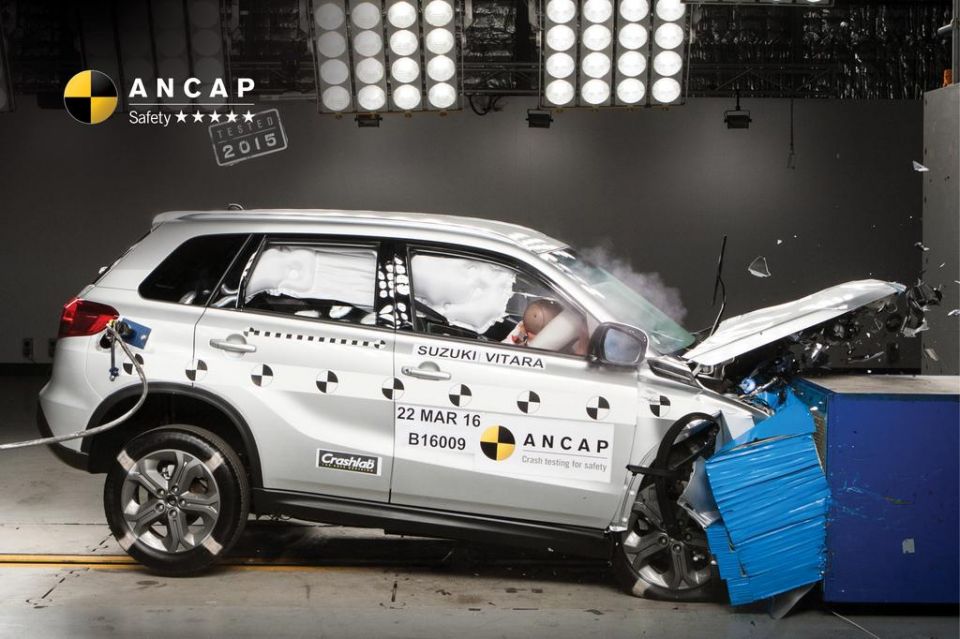
| Category | Suzuki Vitara |
|---|---|
| Side Impact | 16 out of 16 |
| Pole | 2 out of 2 |
| Whiplash protection | Good |
| Pedestrian protection | Good |
| Total | 35.79 out of 37 |
It’s worth noting that active safety assists were not a requirement to get a five-star rating when the Vitara was originally tested, as the base grade currently does without features like AEB and lane departure warning.
Standard safety features include:
Vitara Turbo adds:
The Suzuki Vitara, like the wider Suzuki range, is covered by a five-year, unlimited-kilometre warranty.
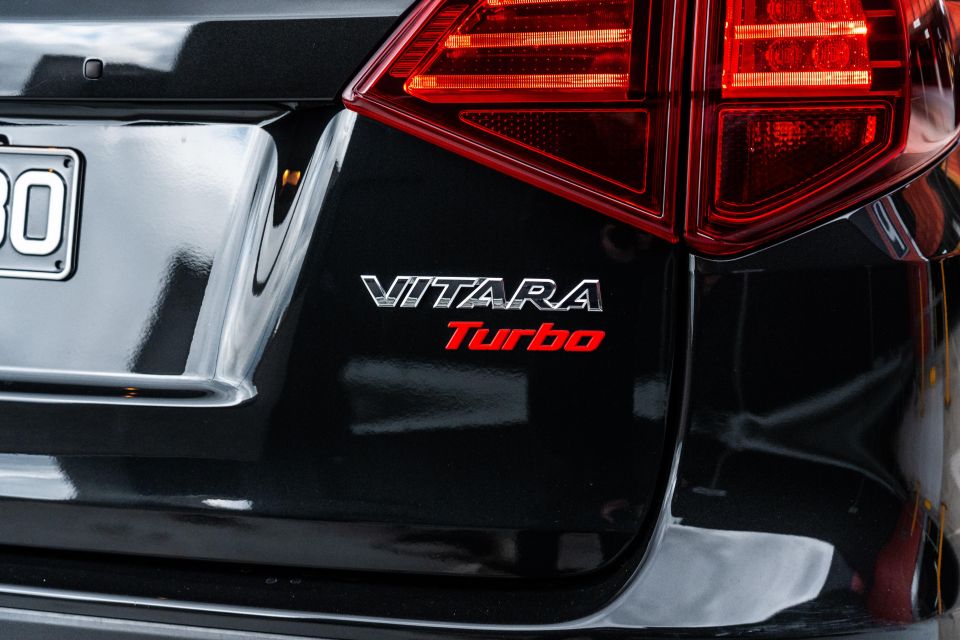
| Running costs | Suzuki Vitara Turbo |
|---|---|
| Warranty | 5 years, unlimited kilometres |
| Roadside assistance | Up to 5 years (service activated) |
| Service intervals | 12 months or 10,000 kilometres |
| Capped price servicing | Up to 5 years or 100,000km |
| Total capped price service cost | $1985 |
To see how the Suzuki Vitara lines up against the competition, check out our comparison tool.
The Suzuki Vitara is now one of the oldest vehicles in its segment, but this small SUV still proves itself to be a great fuss-free runabout for those who don’t want all the frills.
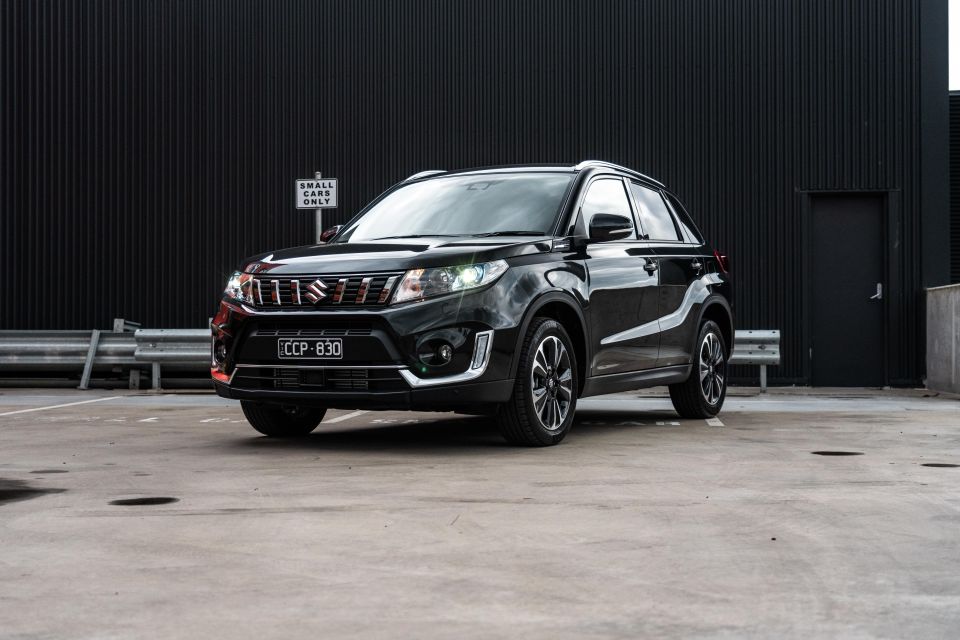
The turbocharged Boosterjet engine is an absolute gem and is definitely the pick of the lineup. While its outputs don’t seem like much on paper, in practice they get the car moving along with ease.
There is an all-wheel drive version of the Vitara Turbo available for an extra $5000, though I’d argue the extra weight doesn’t bring any tangible added value besides security in slippery situations. The average punter also likely won’t really use the system to its full advantage anyway.
The Vitara Turbo feels best suited and most at home in the city. Its light kerb weight makes it a fun car to throw around corners, plus the raised seating position and acres of all-round visibility makes it simple to park.
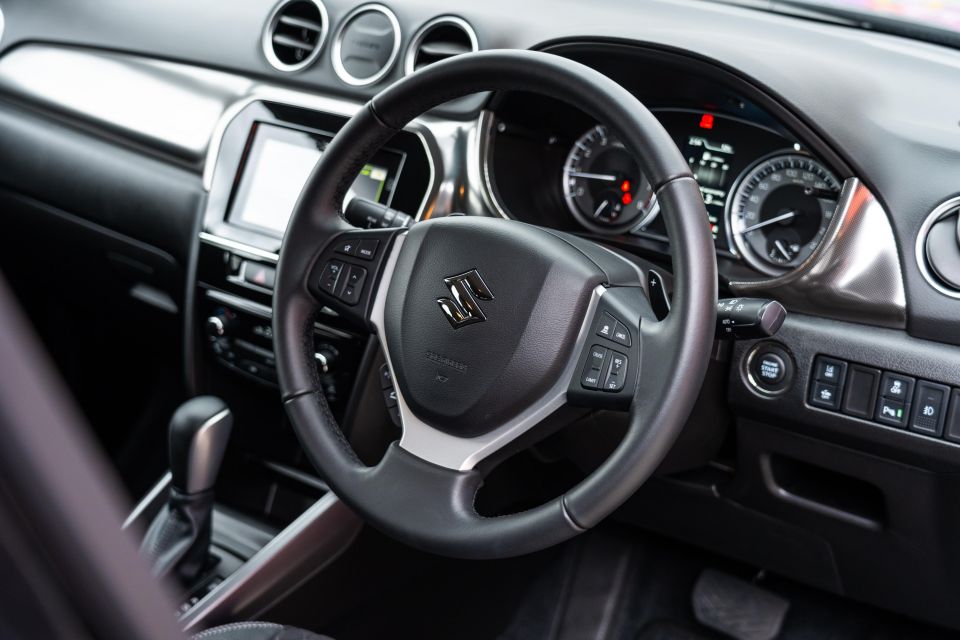
Although the Boosterjet engine can easily handle highway and freeway driving, the Vitara makes this tiring with its bumpy and fussy ride, and loud due to the copious amounts of road and tyre noise.
At the end of the day you have to keep in mind this car has clearly been built to suit tighter budgets. Sure there are a couple of soft touches in the interior, but pretty much every other surface is hard plastic.
What isn’t cheap however about the Vitara Turbo is its asking price. At $36,490 drive-away this small SUV goes up against some really tough competitors that are considerably newer, offer plusher interiors, and have more sophisticated infotainment and active safety technologies.
If this is something that doesn’t worry you though the Vitara Turbo is definitely an old-school fun small SUV that you should go out and experience.
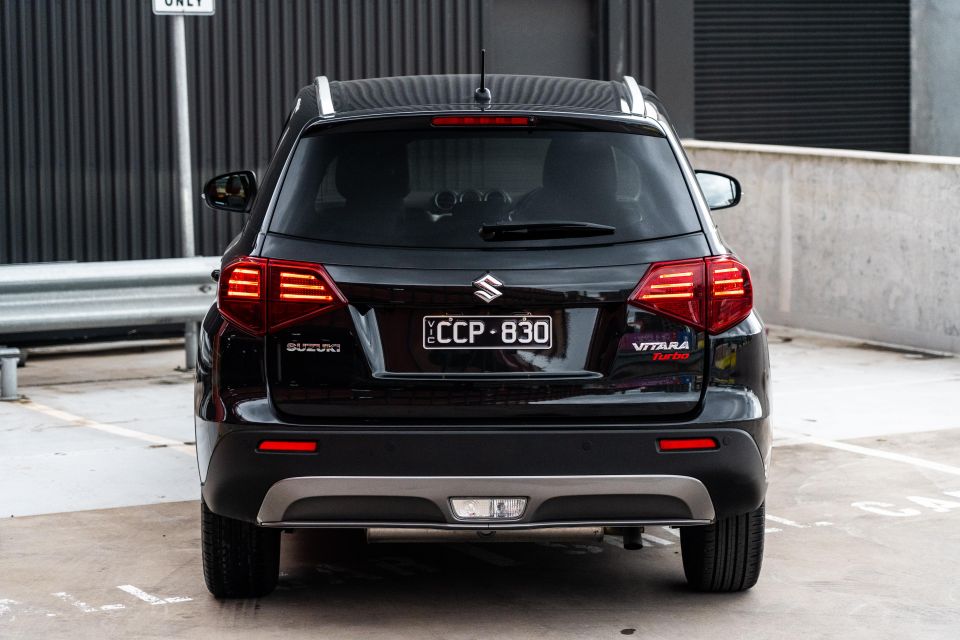
Click the images for the full gallery
MORE: Buy a Suzuki Vitara MORE: Everything Suzuki Vitara
Where expert car reviews meet expert car buying – CarExpert gives you trusted advice, personalised service and real savings on your next new car.
Jack Quick is an automotive journalist based in Melbourne. Jack studied journalism and photography at Deakin University in Burwood, and previously represented the university in dance nationally. In his spare time, he loves to pump Charli XCX and play a bit of Grand Theft Auto. He’s also the proud owner of a blue, manual 2020 Suzuki Jimny.


Ben Zachariah
5 Hours Ago
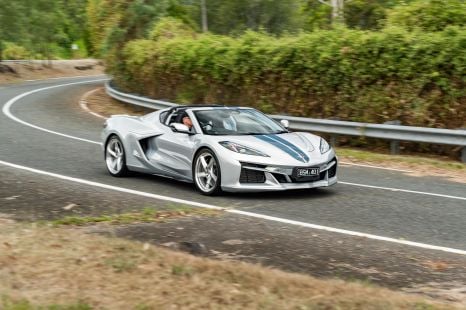

CarExpert.com.au
13 Hours Ago
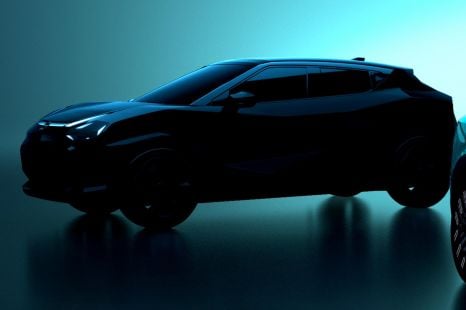

Damion Smy
1 Day Ago
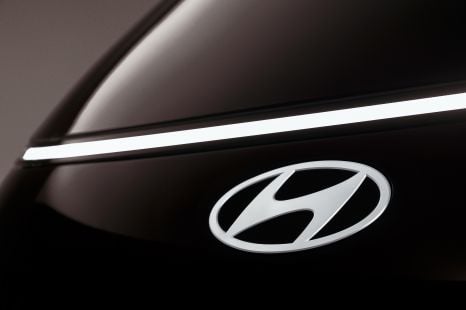

Damion Smy
1 Day Ago
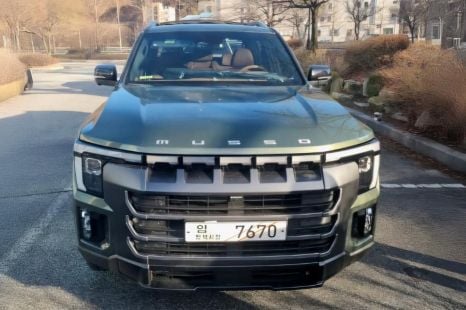

Damion Smy
1 Day Ago
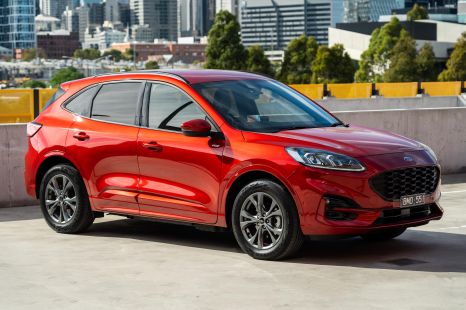

Damion Smy
1 Day Ago